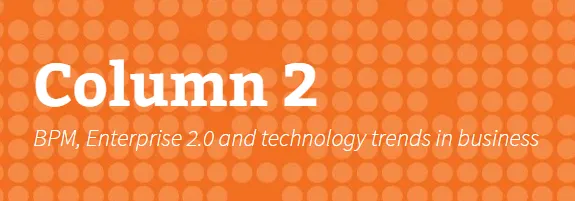Fannie Mae Case Study on Effective Process Modeling at BPMCM15
Blog: Column 2 - Sandy Kemsley
Amit Mayabhate from Fannie Mae (a US government-sponsored mortgage lender that buys mortgages from the banks and packages them for sale as securities) gave a session at the BPM and Case Management Summit on outcome-based process modeling for delivering business value. He had a few glitches getting started — apparently Fannie Mae doesn’t allow employees to download a presentation to their laptop, so he had to struggle through getting connected to the conference wifi and then the Fannie Mae VPN to open a PDF of his presentation — but did tell the best joke of the day when he was restarting his computer in front of us and said “now you know my password…it’s 8 dots in a row”.
Back on track, he discussed their business architecture efforts and how process modeling fits into it. Specifically, he talked about their multifamily housing division, which had its own outdated and inflexible technology platform that they wanted to change out for a simpler infrastructure that would give them better access to information for better decision-making. To get there, they decided to start with the best possible outcome in mind, but first had to have the organization understand not only that they had problems, but some quantification of how big those problems were in order to set those future goals. They identified several key metrics where they could compare today’s measurements with their desired future goals, such as operational efficiency (manual versus automated) and severability. To map from the current to future state, they needed a transformation roadmap and a framework for achieving the steps on the roadmap; this included mapping their journey to greater levels of process maturity, and creating a business capability model that included 17 capabilities, 65 functions, 262 sub-functions, and around 300 process flows.
Their business architecture transformation framework started with the business model (how do we make money), the operating model (how do we behave to make money) and the business capability model (what abilities are needed) using the Business Model Canvas framework. They used other architecture analysis tools, such as analyzing their operating model by plotting business process standardization against business process integration both for their current state and desired future state, to help them develop the strategy for moving between them. They used Mega’s business strategy module for most of the architecture analysis, which helps them identify business processes that are ripe for automation, then move to a BPMS for process modeling and automation. In that way, they can do just the process modeling that provides them with some architectural change that they know will provide value, rather than attempting to boil the ocean by modeling all processes in the organization.
